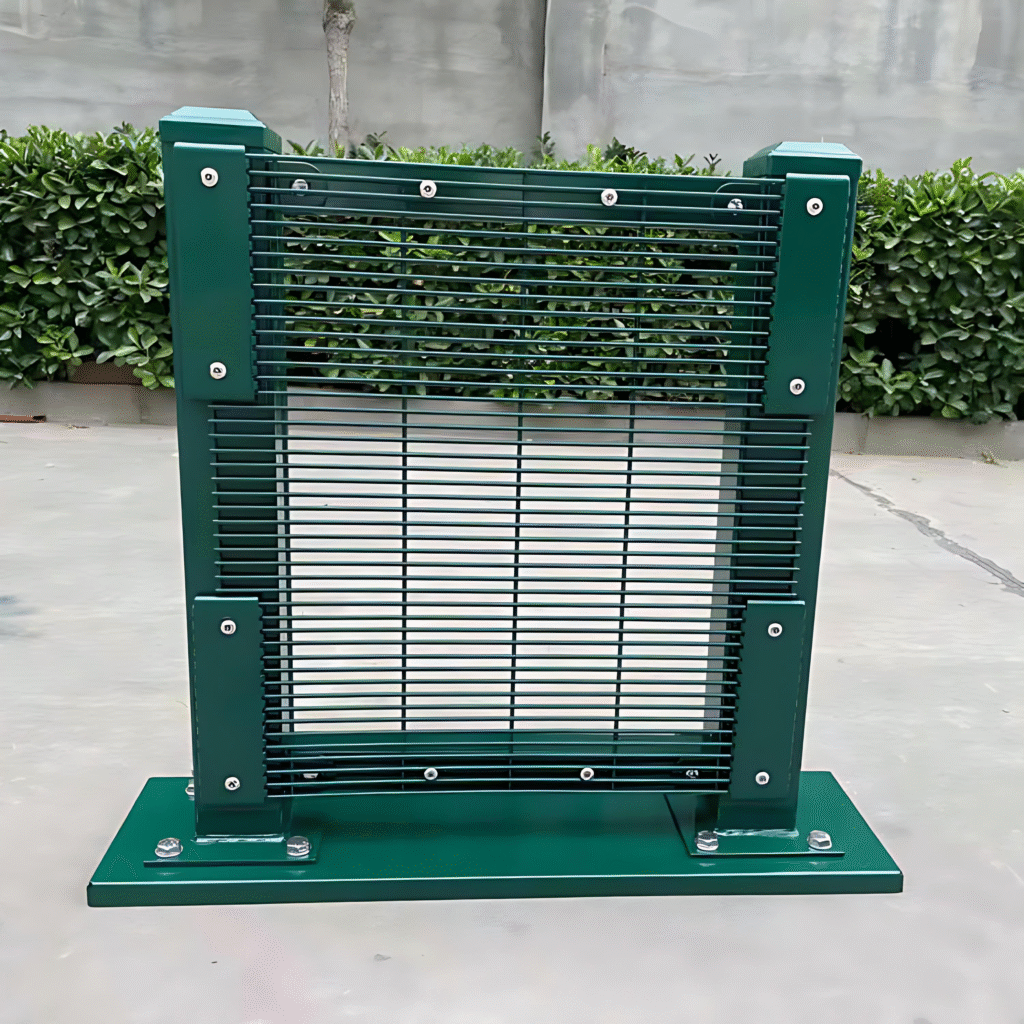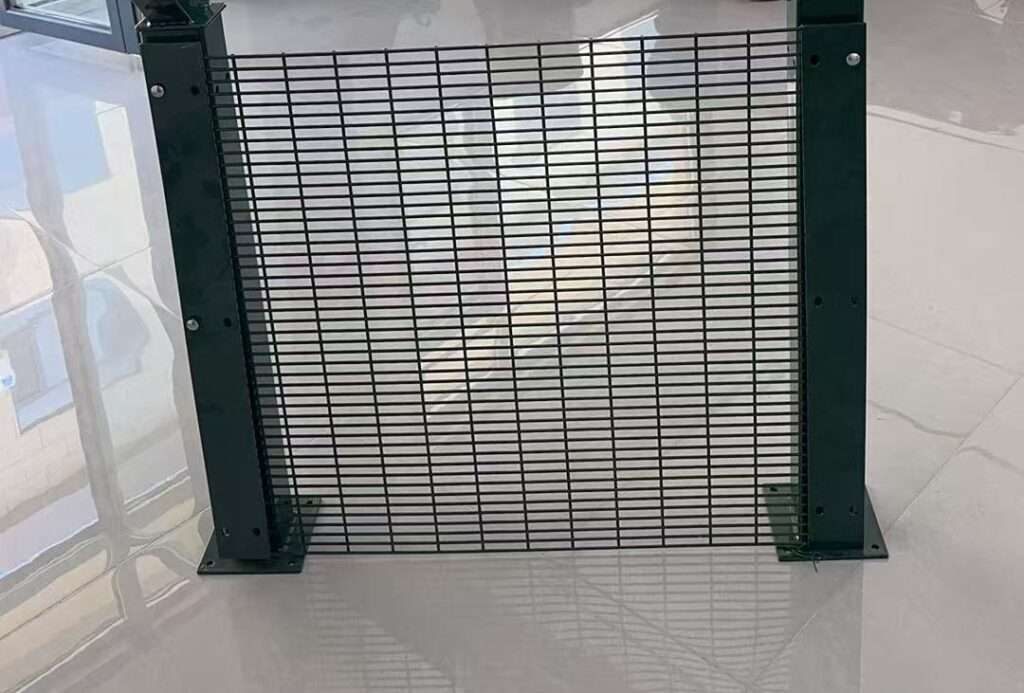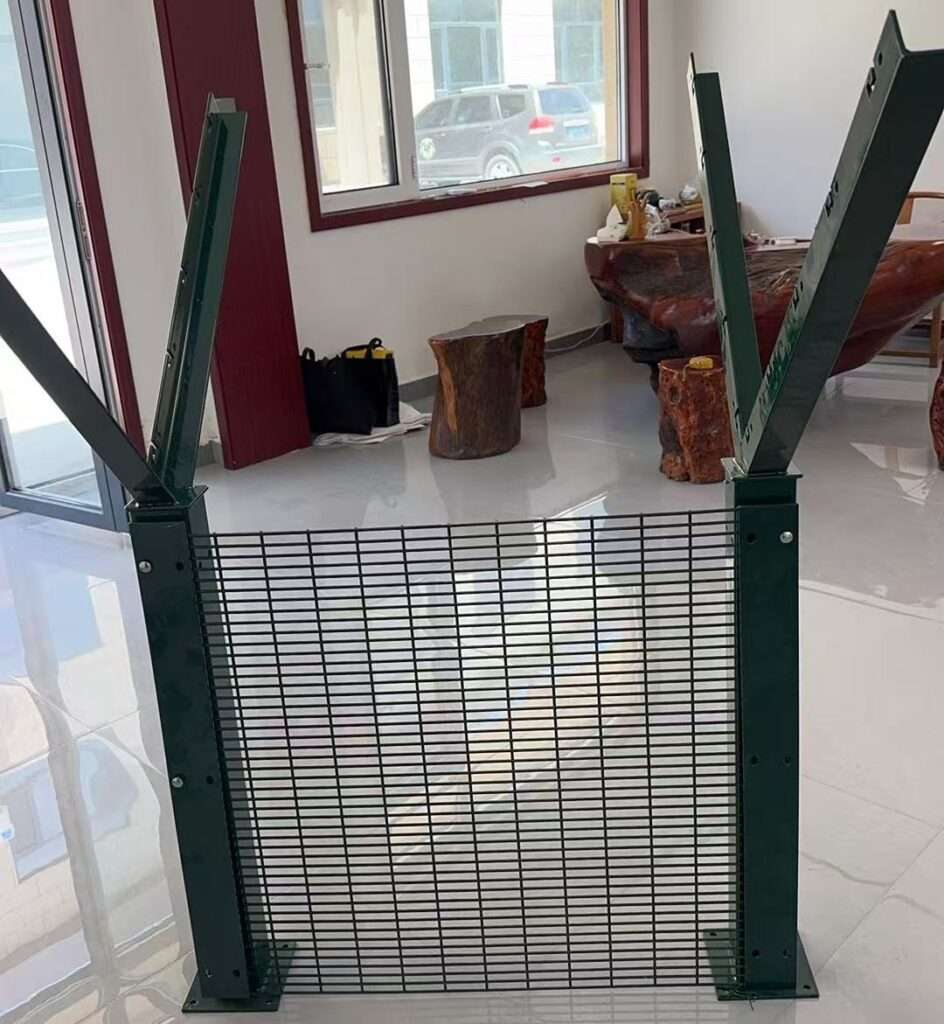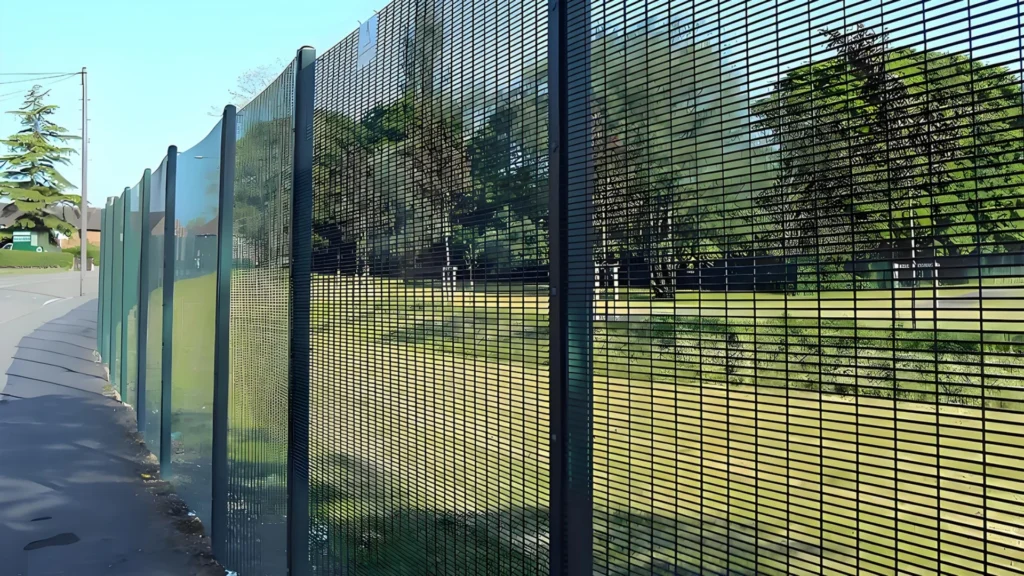Introduction to Anti-Climb Fencing
Anti-climb fencing has emerged as a vital component in the world of security management, especially for commercial and industrial properties. Its main purpose is to deter unauthorized access, therefore enhancing the safety and protection of assets. This type of metal fencing products is specifically designed to be difficult to scale or tamper, making it an effective barrier against intruders. Various materials and designs contribute to its anti-climb features, offering different levels of security based on individual needs.
Among the popular varieties of anti-climb fencing is the 358 mesh fence, which is famous for its robustness and resistance to climbing and cutting. The small mesh openings make it nearly impossible for individuals to gain a foothold for climbing. Consequently, this type of high density fencing is highly favored in environments where security is paramount requirement, such as prisons, military installations, and high-security facilities. Additionally, clear view fencing provides a transparent solution that allows for visibility while still remaining security demand. This secure type typically utilizes a rigid panel structure that discourages climbing while enabling surveillance of the area.
Further enhancing security measures, some anti-climb fences incorporate razor wires or barbed wires at the top as add-ons. These additions serve as an extra formidable barrier that can discourage any attempts at scaling or tampering the fence. Their sharp and edgy goods complicate access even further, which is making it clear that security and defence is a top priority. Choosing the right anti-climb fence is super crucial, not only for the level of security it offers but also for its aesthetic and cost-efficiency aspects as well.
Understanding how to get the pricing associated with these fencing options is essential for potential buyers. Some factors that influences cost include material type, height, installation requirements, and any additional security features needs to be considered. And to get awareness of these elements will assist and help buyers in making informed decisions regarding their strong security needs.
Factors Influencing Anti-Climb Fence Pricing
Actually the pricing of anti-climb fencing can vary significantly based on numerous detailed factors. One of the primary considerations is what the type of anti-climb fence being installed. Various models exist at our factory, such as the 358 anti-climb fence, which is widely favored for its robust design and security capabilities. Alternatively, clear view fencing offers a high level of visibility while still providing security. Each type presents distinct advantages while influencing the overall price per meter,see the images below,the third model has arms for barbed wires or razor wires.



Another key matter to consider is the additional features that may be included. Like mentioned above, the integration of razor wire or barbed wire enhances security but may also significantly affect the cost as well. These typical features provide extra deterrents against trespassers, thus addressing specific security needs, but their inclusion can lead to increased expenses,it is up to you whether adding it or not.
The required height and total length of the fence are also the next critical determinants of pricing. Taller fences they are the price typically will cost more due to the increased materials and labor involved. Similarly, the overall perimeter that needs securing will impact the price; a longer expanse requires more materials, labor, and installation time, leading to a rise in cost calculation.
Wire diameter is another essential consideration for fencing project. Thicker wires will add strength and durability to the fence, that makes them more resistant to tampering. However, opting for thicker wires may also lead to higher costs per meter too. Moreover, the intended use area also plays a vital role in determining requirements and prices; for instance, a commercial property may necessitate a sturdier design compared to a residential area normally. All these kind of factors collectively are examples impact the overall cost of anti-climb fencing, thereby requiring specificity in requirements to obtain an accurate quotation.
How to Get a Customized Quote Then?
In order to obtain a customized quote for anti-climb fencing,it is a pivotal step to ensure that your specific requirements are met first. A tailor-made quote not only can provide you with accurate pricing but also help in understanding the various options available based on your specific needs. To begin the process of getting quotation, it is quite essential to provide the supplier with detailed information that is regarding your specifications. Key details are included your desired height and length of the fence you like to buy, which will directly affect the overall cost and functionality. Additionally, coating options such as galvanization for enhanced corrosion resistance should be specified, as this can impact both the durability and maintenance of the fencing system.
Furthermore, clarifying your preferred pricing terms is vital. Pricing terms such as EXW (Ex Works), FOB (Free On Board), and CIF (Cost, Insurance, and Freight) determine the responsibilities of both the buyer and seller, and can influence the overall quote significantly. Each term delineates how costs will be managed and can affect logistical planning as well.
To facilitate communication, reach out to potential suppliers directly. This can often be done through emails or phone calls to ensure that all your concerns are adequately addressed. For immediate assistance, many companies now utilize platforms such as WhatsApp, where you can send your inquiries with all the pertinent information for a swift response. By clearly outlining your requirements and maintaining open lines of communication, you will enhance your chances of receiving a quote that accurately reflects your anticipated project costs and timelines.
Ultimately, engaging in this detailed process helps ensure that your anti-climb fencing solution is both effective and tailored to your specific needs, leading to an informed purchasing decision.
Conclusion and Final Thoughts
When evaluating anti-climb fencing options, it is essential to understand the various factors that contribute to pricing. Throughout this discussion, we have emphasized the significance of providing detailed specifications and requirements to receive accurate quotes from suppliers. Anti-climb fencing is designed to enhance security and deter unwanted access, but the cost can vary significantly based on materials, height, design, installation complexity, and location. Therefore, potential buyers should carefully assess their security needs and preferences before committing to a specific solution.
Additionally, one must consider the long-term benefits of investing in high-quality anti-climb fences. While upfront costs may appear substantial, the durability and effectiveness of these structures can provide value and peace of mind over time. This is particularly relevant for properties that require a heightened level of protection against intrusions. Customers are encouraged to reach out to suppliers for personalized quotes which will take into consideration their unique circumstances and preferences.
Engaging with potential providers allows individuals and businesses to gain insights into the various options available in the market. Questions regarding specific materials, maintenance requirements, and customization can be addressed during this process, ensuring that all aspects of the project are understood. By taking these steps, customers can make informed decisions that align with their budgetary constraints and security needs.
In a word, by understanding anti-climb fencing pricing ,you will know what a crucial thing for making the right investment. Prospective buyers should initiate discussions, possibly via platforms like WhatsApp+86 138 1087 4664, to streamline the quoting process and facilitate clearer communication with suppliers. Investing time in defining security requirements can lead to better choices and enhanced protection for valued properties.




